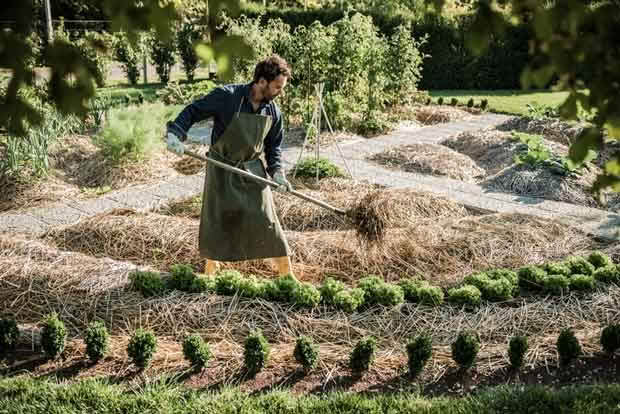5 tips for a prettier vegetable garden

Winter is the time to start thinking about planning your garden. Photo: Dreamstime.
Now is a great time to create something pretty and functional for this spring.
Words: Nadene Hall
5 WAYS TO PRETTY UP YOUR VEGGIE PATCH
1. Change your vege beds into shapes other than rectangular, and go for more natural shapes like curves vs straight lines.
2. Mix and match vegetables vs planting a straight row of just one vegetable. Think in terms of height and colour like you would with a flower garden.
3. Plant in patterns so you have a pleasing-to-the-eye mix of shapes and leaf textures.
4. Spread structures like supports for beans or tomatoes throughout the garden, and add some extra colour by painting them.
5. Mix up your vegetables with plantings of flowers and herbs. There’s a great free guide to companion planting here:

Photo: Dreamstime
PERMACULTURE GARDEN DESIGN TIPS
If you’re creating a new garden or want to better design the old, permaculture has some useful tips for working out where you want to site different parts of it.
The idea is to have everything in a logical order so you save yourself time and energy, and use as much of the waste you generate as possible. The more positively different parts of your garden work together, the more efficient your gardening becomes.
Possible things to include:
• garden beds
• chicken coop
• fruit trees
• water tank
• greenhouse
In permaculture, all of these things can work together to make you more efficient.
Siting a greenhouse beside a north-facing wall of your house means you can use the heat stored in the house to warm it, plus it’s close to your kitchen in winter so there’s no long trek through wet grass to work or harvest produce.
Garden beds should be as close to the kitchen as possible for ease of harvest, and also because if it’s closer to your home’s main food preparation area and you see it all the time, you are more likely to care for it.
The chicken coop should be right beside the garden and also near the kitchen so any weeds or edible kitchen scraps can be immediately fed out to your birds.
The compost pile should be right beside the coop so once the birds have worked it over, litter and manure can be shovelled into the compost (or if you have a moveable coop, compost could be piled onto the area where the coop has been).
A coop can also be used to collect rainwater for storage in barrels or tanks so it can be used on the garden, or to maintain a fresh water supply for the coop.
A permanent coop can contain fruit trees so birds get extra feed, plus their manure will feed the trees. Root systems may need protection such as rocks or pavers so birds can’t scratch them up.
Love this story? Subscribe now!
 This article first appeared in NZ Lifestyle Block Magazine.
This article first appeared in NZ Lifestyle Block Magazine.
